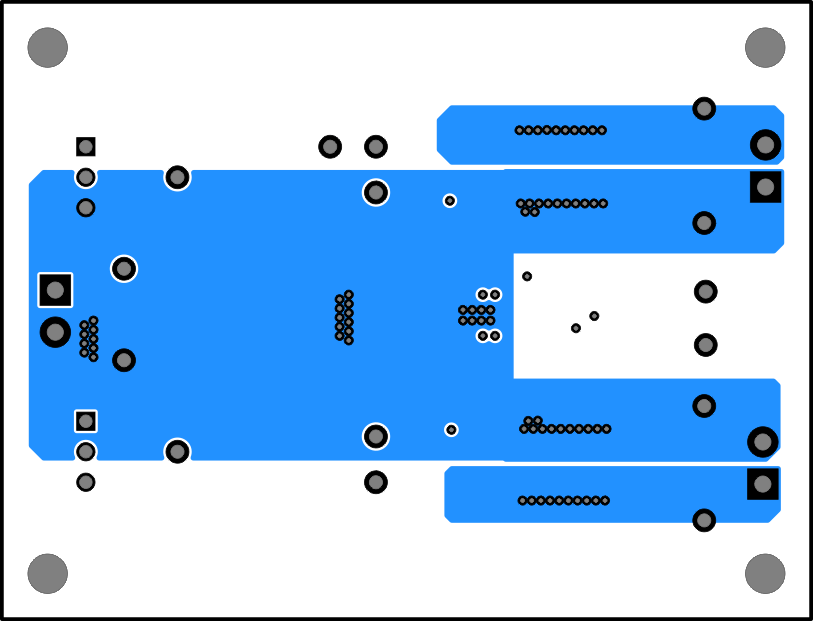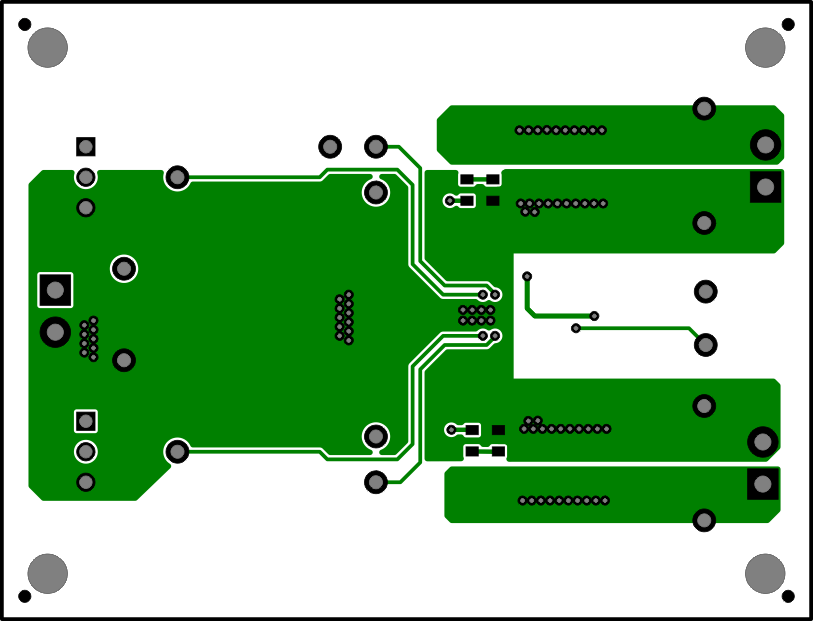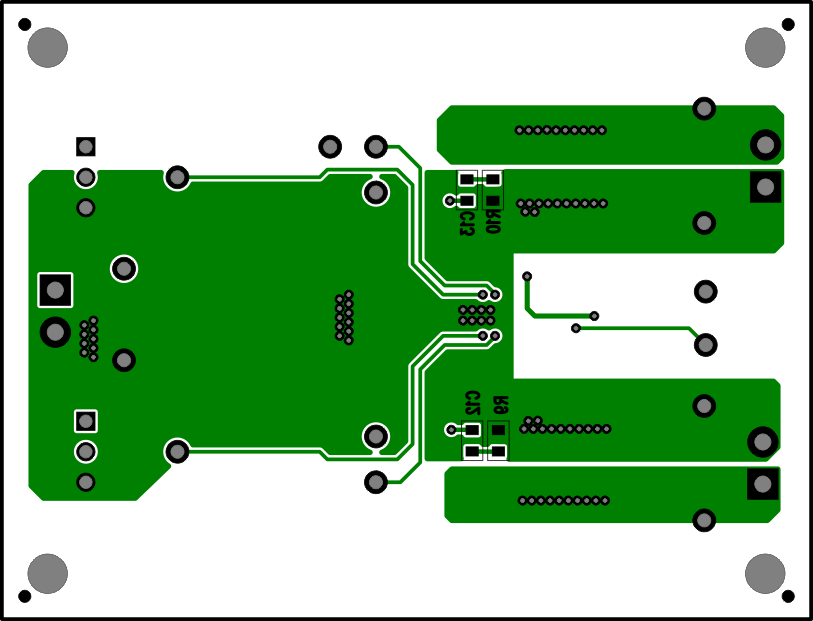SLVU767A August 2012 – October 2021 TPS542951
- Trademarks
- 1Introduction
- 2Performance Specification Summary
- 3Modifications
- 4Test Setup and Results
- 5Board Layout
- 6Schematic, Bill of Materials, and Reference
- 7Revision History
5.1 Layout
The board layout for the TPS542951EVM is shown in Figure 5-1 through Figure 5-6. The top layer contains the main power traces for VIN and VOUTx. Also on the top layer are connections for the pins of the TPS542951 and a large area filled with ground. Many of the signal traces also are located on the top side. The input decoupling capacitors are located as close to the IC as possible. The input and output connectors, test points, and all of the assembled components are located on the top side. An analog ground (GND) area is provided on the top side. Analog ground (GND) and power ground (PGND) are connected at a single point on the top layer near the IC. The other layers are primarily power ground but the bottom layer has some traces to connect the test points for SSx and ENx.
 Figure 5-1 Top Assembly
Figure 5-1 Top Assembly Figure 5-2 Top Layer
Figure 5-2 Top Layer Figure 5-3 Internal 1 Layer
Figure 5-3 Internal 1 Layer Figure 5-4 Internal 2 Layer
Figure 5-4 Internal 2 Layer Figure 5-5 Bottom Layer
Figure 5-5 Bottom Layer Figure 5-6 Bottom Assembly
Figure 5-6 Bottom Assembly